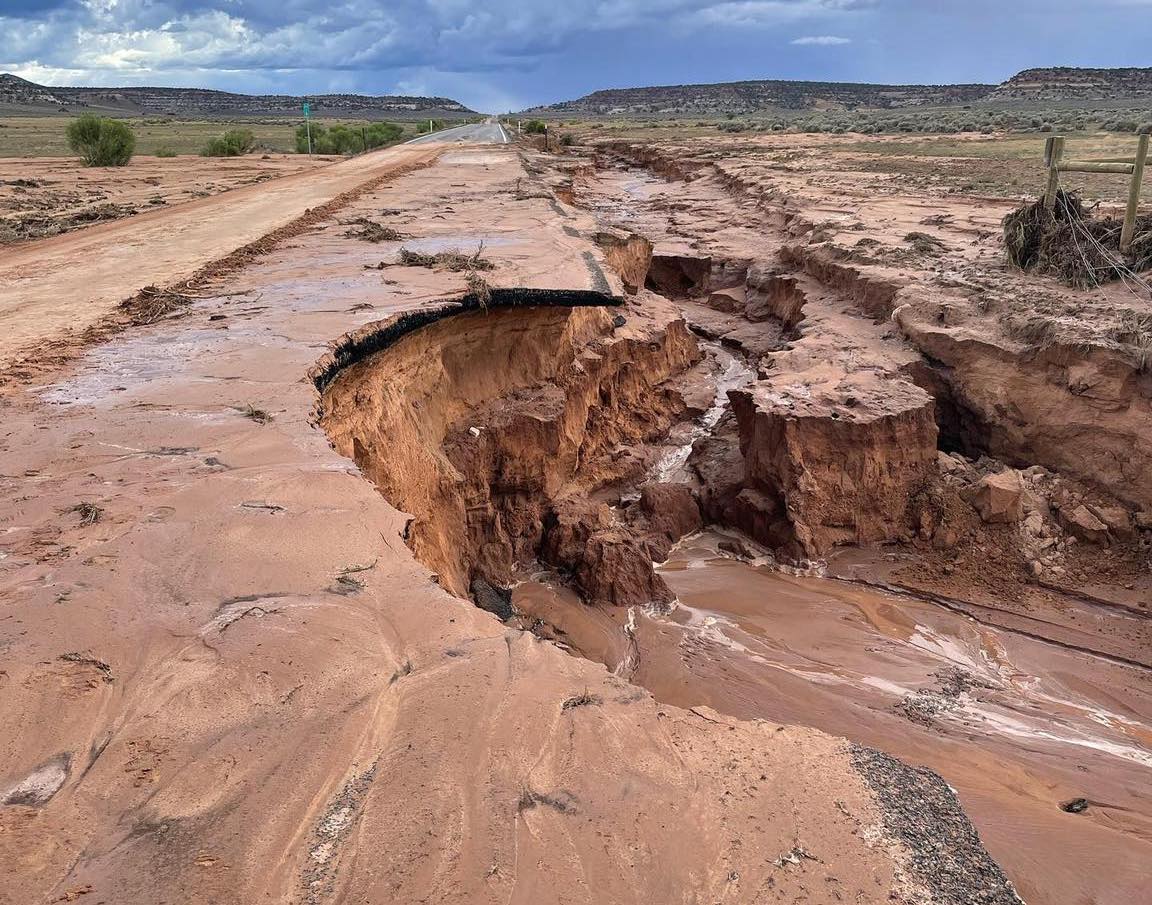Some information may be outdated.
An active monsoon season has led to multiple flash floods in local drainages, some infrastructure damage, and the lifting of regional fire restrictions this month as dramatic videos of waves of water flowing down Pack Creek and Mill Creek into Moab circulate on the internet.
State and federal land management agencies lifted fire restrictions on August 12, stating that “due to a persistent and active monsoon pattern, accompanied by rainfall and higher humidity over the region” the fire danger has decreased across southeastern Utah. As of August 18, State Route 211 remains closed at the junction with Highway 191 after intense rainfall undermined the roadway.
Meteorologists say that for the next few weeks, there’s likely to be more active storms across the Southwest and here in Moab.
“Talking with some of the older folks in our office, this monsoon season has definitely been more robust,” said Meterologist Lucas Boyer. “It looks like things are going to stay active for a while.”
Boyer works in the Grand Junction office of the National Weather Service, which serves western Colorado and eastern Utah with Doppler weather radar on the top of the Grand Mesa.
“This season we’ve had such persistent storms. We keep hoping that things will abate for a minute—not that we don’t need the moisture, but when it’s day after day it’s tough,” he said.
Boyer said that in areas like Moab, back-to-back storms can suffuse the soil with moisture.
“When we get a little surface moisture, we can manufacture thunderstorms because of the terrain,” Boyer said. “It’s not just big weather fronts that come through that generate storms. These are standard issue movements over terrain like mountains that are causing these storms.”
That rain-soaked ground can also cause flash floods, as the soil can’t absorb any more rainfall. That’s particularly true of areas that have been scoured by a wildfire, like the burn scar from the Pack Creek wildfire. The fire burned almost 9,000 acres in the La Sal Mountains last summer and produced flash floods laden with ash and fire debris.
“Increased flooding is an area of concern any time you have a post-wildfire situation,” said Boyer. “High temperatures can create this hydrophobic situation where the ground can’t absorb rainfall. There’s also a lack of vegetation to slow things down, hence what you’re getting there in Moab with Pack Creek.”
Boyer said that his office monitors those flood impacts as well, including the area impacted by the Grizzly Creek fire, which burned 32,631 acres along I-70 in Colorado in 2020. That burn scar led to significant landslides that closed the major highway multiple times the following year.
“There’s some hints that vegetation may be recovering enough there to prevent landslides, but there’s a lot of info gathering going on there right now,” said Boyer. “Knock on wood.”
Appreciate the coverage? Help keep local news alive.
Chip in to support the Moab Sun News.





